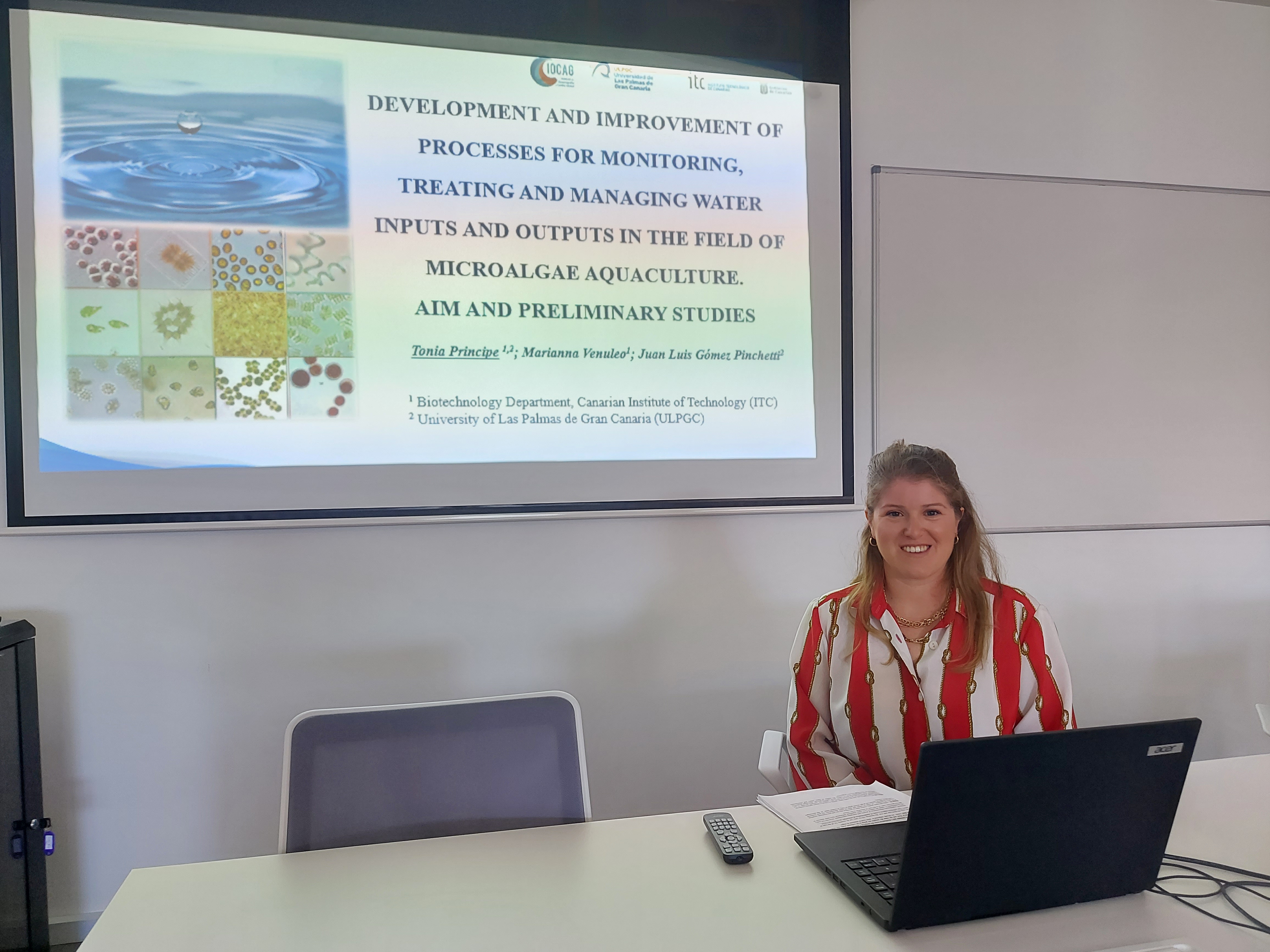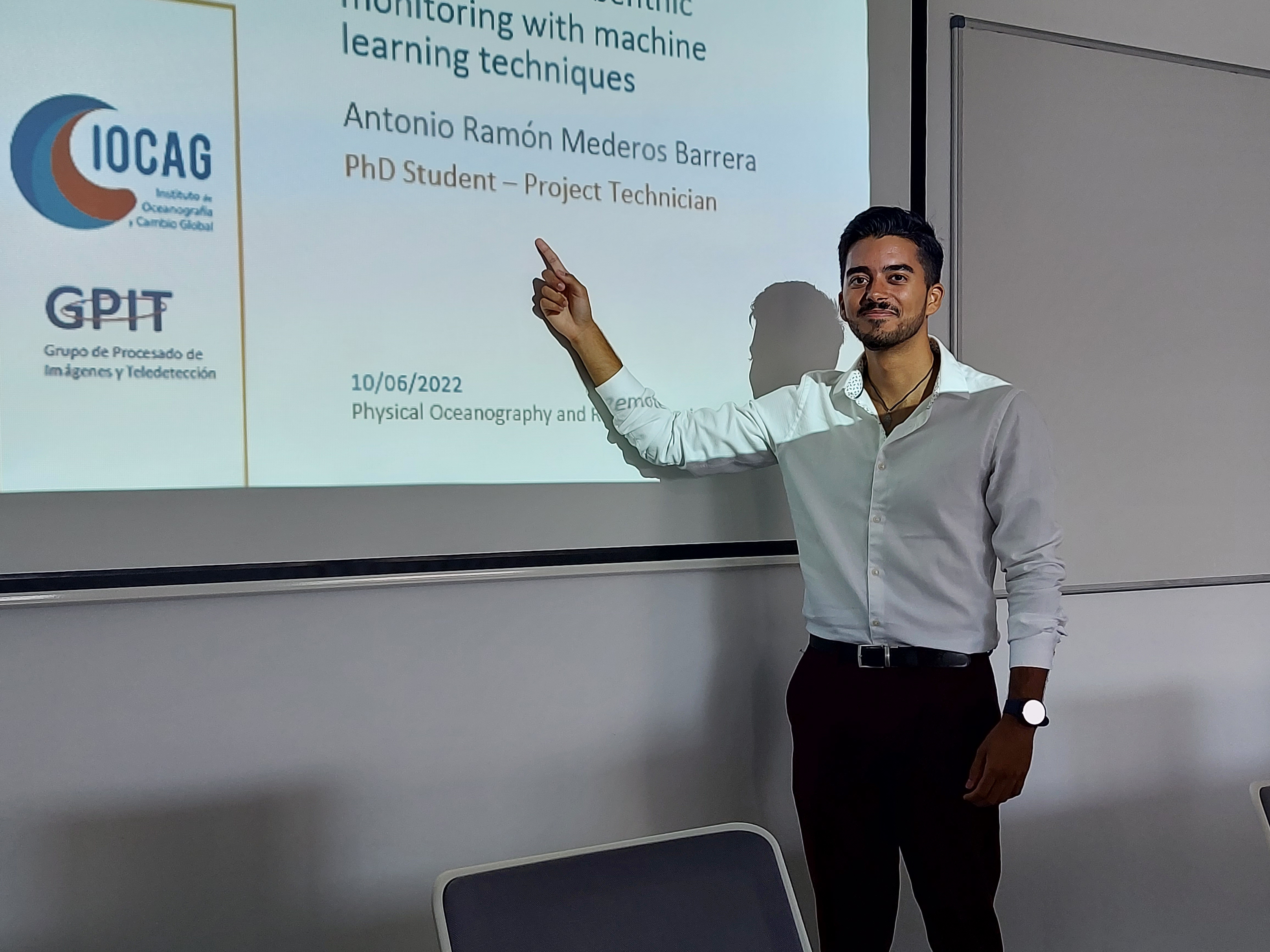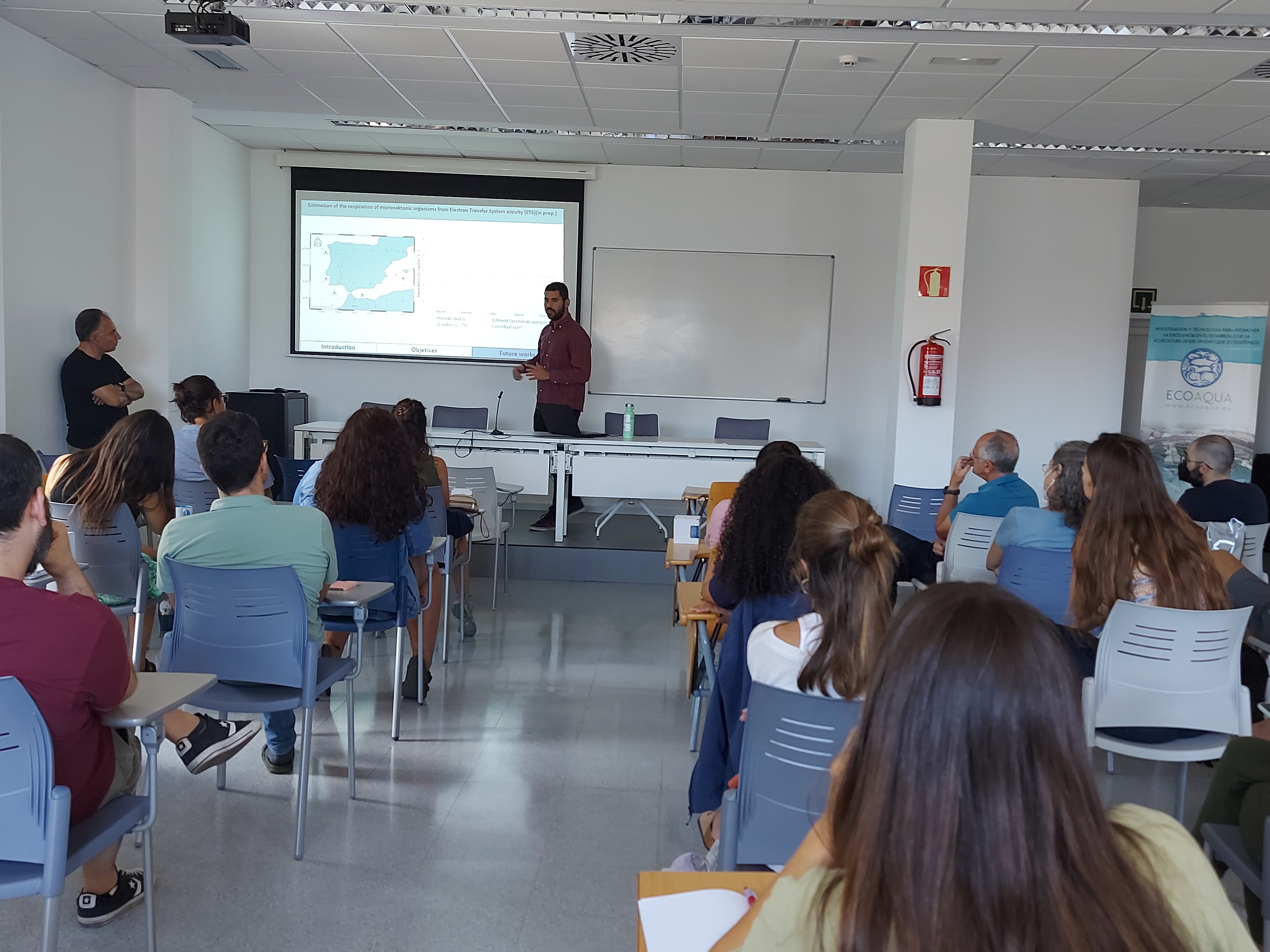PhD presentation Tonia Príncipe 17 th June. 2022
Tonia explained during his online presentation his research entitled: Development and improvement of processes for monitoring, treating and managing water inputs and outputs in the field of microalgae aquaculture. aim and preliminary studies
PhD presentation Antonio Ramón Mederos Barrera 10 th June. 2022
Antonio explained during his online presentation his research entitled: Remote sensing for coastal zone bathymetry and benthic monitoring with machine learning techniques
PhD presentation Miguel Angel Gutiérrez Guerra 3rd June 2022
Miguel A. explained during his online presentation his research entitled: A new index to determine the changes in the four principals Eastern Boundary Upwelling Systems under Climate Change
PhD presentation Javier Díaz Pérez García 3rd June 2022
Javier explained during his online presentation his research entitled: Spatial assemblages of micronektonic crustaceans (Decapoda, Euphausiacea and Lophogastrida) support pelagic ecoregions along a latitudinal transect in the Atlantic Ocean .
Begoña Bustamante González ( Ph.D. student):Cultivation of native microalgae in the Canary Islands: optimizing water, energy and nutrient use on industrial production processes. Main goals and preliminary studies.
Gran Canaria is a strategic site for microalgae production due to its ideal climatological conditions and focal geographic location. The Biotechnology Department of the Canarian Institute of Technology (ITC) investigates all aspects of microalgae cultivation and processing at pilot to demo scale, in order to develop industrial knowledge on both economically and environmentally sustainable production technologies.
Montserrat Alemán Vega ( Ph.D. student):PRODUCTION OPTIMIZATION OF CANARIAN NATIVE MICROALGAE STRAINS AND PRELIMINARY DEVELOPMENT OF POST-PROCESSING STAGES FOR THE EXTRACTION OF METABOLITES OF COMMERCIAL INTEREST
Extensive mass cultures of microalgae are considered as the most promising alternative strategy to traditional agriculture. The main bottlenecks for the production of microalgae are the environmental and economic costs associated with: i) the use of freshwater and fertilizers in the cultivation phase; ii) the biomass harvesting during processing; iii) the use of traditional chemicals (i.e., solvents) for the extraction of fractions/compounds of interest from the biomass.
Tania Pereira Vázquez ( Ph.D. student):Diagnosis of the Western Boundary Current System of the Weddell Gyre from a global eddy-resolving ocean model
The major feature of the Weddell Sea, located east of the Antarctic Peninsula in the Southern Ocean, is a cyclonic gyre driven by wind and thermohaline forcing as well as topographic steering. To a great extent, the Western Boundary Current System (WBCS) of the Weddell Sea gyre splits into different branches before its arrival to the Scotia Sea, east of the Bransfield Strait. Importantly, one of these branches leakages near-freezing subsurface waters into Bransfield Strait.
Tonia Príncipe ( Ph.D. student):DEVELOPMENT AND IMPROVEMENT OF PROCESSES FOR MONITORING, TREATING AND MANAGING WATER INPUTS AND OUTPUTS IN THE FIELD OF MICROALGAE AQUACULTURE. AIM AND PRELIMINARY STUDIES
Microalgae aquaculture activity in the Canary Islands is strictly controlled. Apart from regulating which microalgae species can actually be cultivated and how, the local legislation also establishes standards for the quality of the aquaculture process water. However, no monitoring plans for microbiological and physical-chemical characteristics of the water outputs (resulting from microalgae biomass processing) are currently available to support companies in complying with the requirements.
Tonia Príncipe( Ph.D. student): Remote sensing for coastal zone bathymetry and benthic monitoring with machine learning techniques.
Microalgae aquaculture activity in the Canary Islands is strictly controlled. Apart from regulating which microalgae species can actually be cultivated and how, the local legislation also establishes standards for the quality of the aquaculture process water. However, no monitoring plans for microbiological and physical-chemical characteristics of the water outputs (resulting from microalgae biomass processing) are currently available to support companies in complying with the requirements.
Antonio Ramón Mederos Barrera( Ph.D. student):Remote sensing for coastal zone bathymetry and benthic monitoring with machine learning techniques.
Remote spectral imaging of coastal areas can provide valuable information for their sustainable management and conservation of their biodiversity. For example, seagrass beds are very productive coastal ecosystems that serve as a refuge for other species, absorb atmospheric CO2, and protect the coastline from erosion. The Intergovernmental Oceanographic Commission (IOC) indicates that, at least, half of the world’s shallow coastal waters remain unmapped or poorly understood. Specifically, in Spain, protected areas cover 27.21% of its total surface and the coastline length is about 7,880 km.



